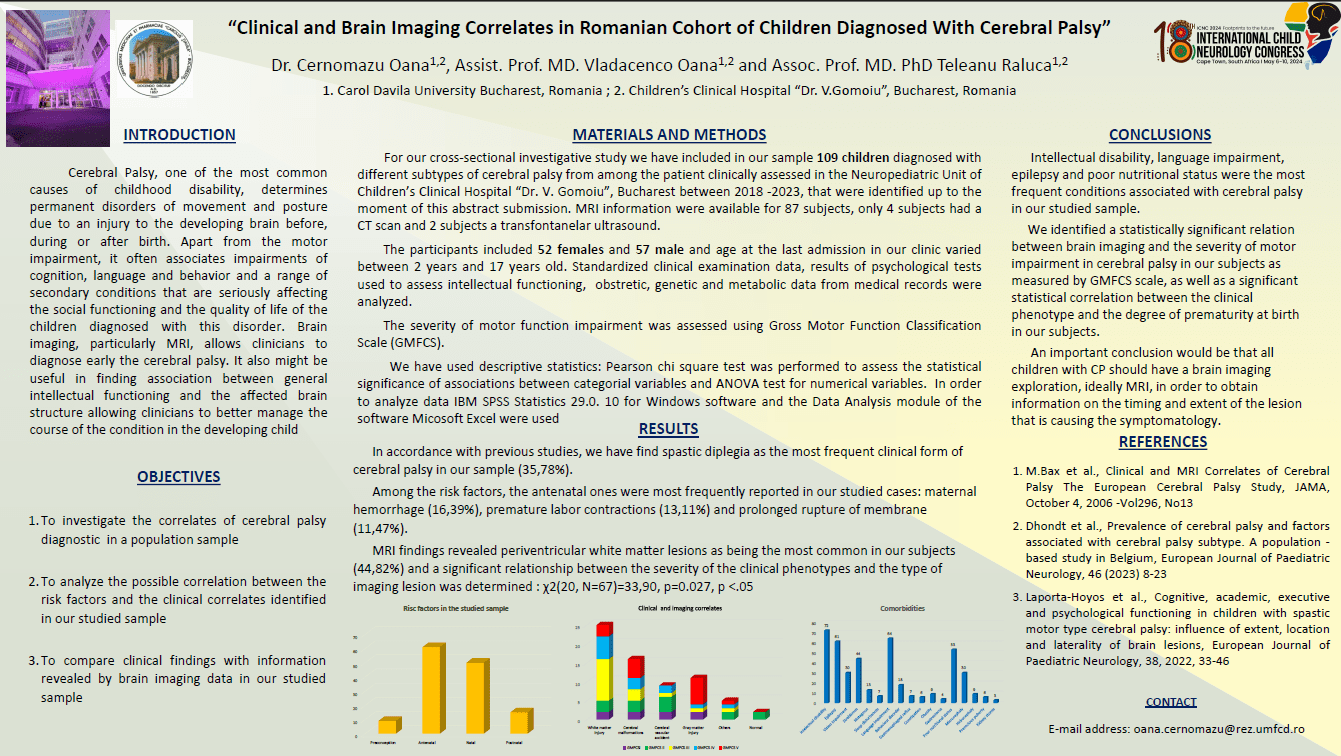Clinical And Brain Imaging Correlates In Romanian Cohort Of Children Diagnosed With Cerebral Palsy.
Introduction Cerebral Palsy is the most common cause of childhood disability. Apart from the motor impairment, it often associates impairments of cognition, language and behavior with a serious impact on the social functioning and the quality of life for the children diagnosed with this condition. Brain imaging, particularly MRI, allows clinicians to diagnose early the cerebral palsy and might be useful in finding association between general intellectual functioning and the affected brain structure, allowing clinicians to better manage the future course of the condition. Method For our cross -sectional investigative study we have identified 109 children diagnosed with different subtypes of cerebral palsy, clinically assessed in the Neuropediatric Unit of Children’s Clinical Hospital “Dr. V. Gomoiu”, Bucharest between 2018 -2023. The age of the subjects varied between 2 years and 17 years old and 87 of them had an MRI brain scan. Standardized clinical examination results, MRI, transfontanellar ultrasound or computer tomography results, obstetric, genetic, and metabolic data from medical records were investigated. Results From among the conditions associated with cerebral palsy, epilepsy was found to have a great prevalence among our subjects, (n=63, 57,79%). Also n=50 (45,87%) of our subjects were diagnosed with a certain degree of cognitive impairment. 35 subjects (32,11%) had quadriplegia. Conclusion The aim of our study was to understand how potential preventive strategies could be targeted by observing the correlation between clinic and brain imaging findings and our results revealed good correlations between clinic and imagistic findings encouraging us to further pursue this path.
Oana Cernomazu
Children's Clinical Hospital dr. V. Gomoiu, Bucharest
Romania
Oana Vladacenco
Clinical Hospital Dr. V. Gomoiu Bucharest
Romania
Raluca teleanu
Clinical Hospital Dr. V. Gomoiu Bucharest
Romania

Oana Cernomazu
Children's Clinical Hospital dr. V. Gomoiu, Bucharest
Romania